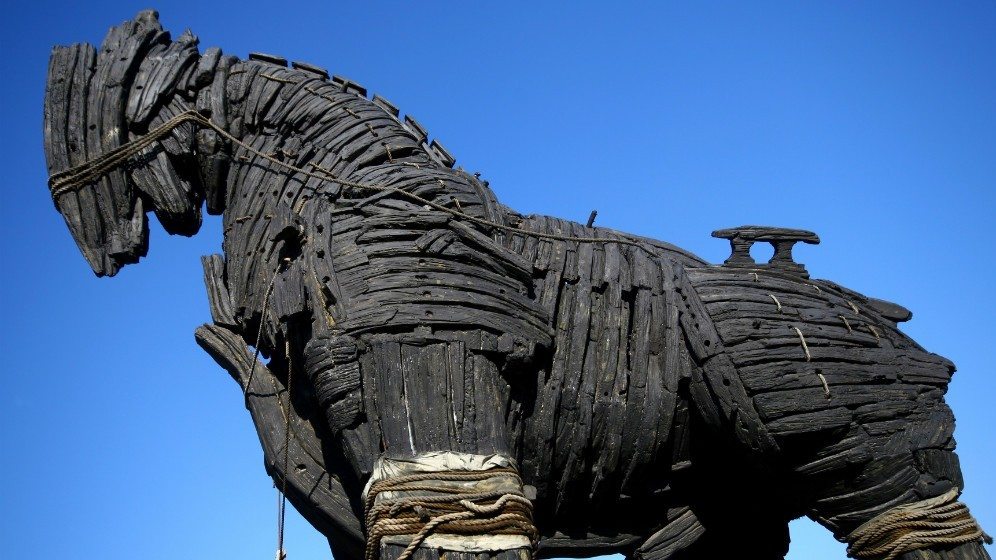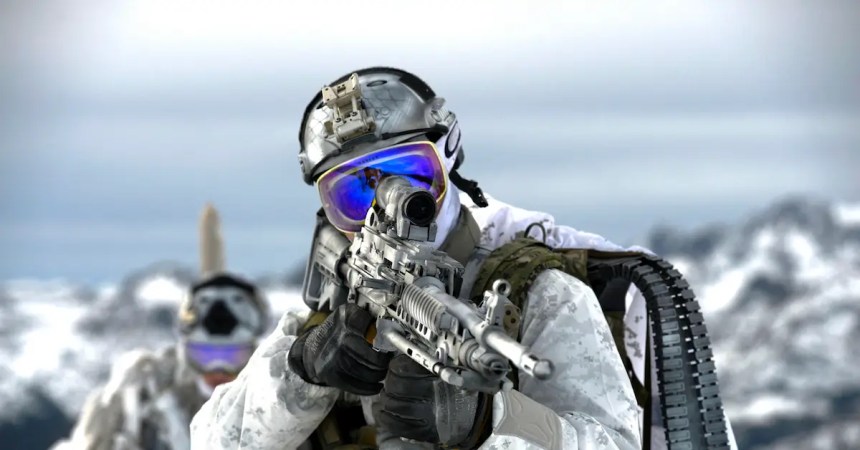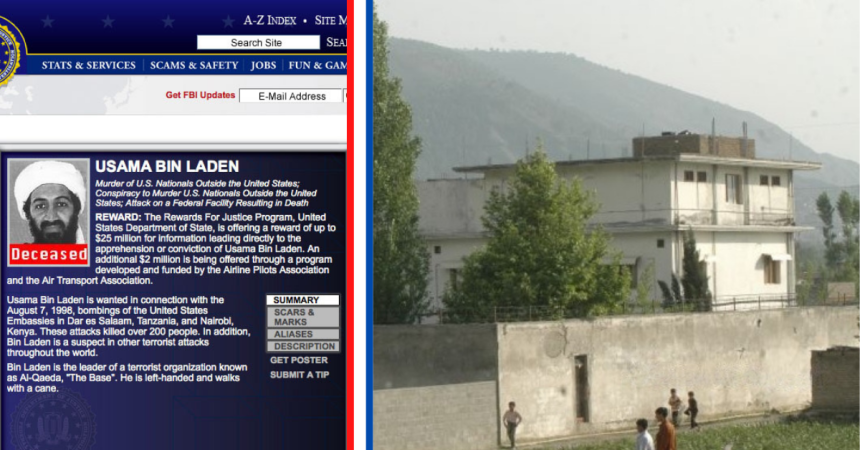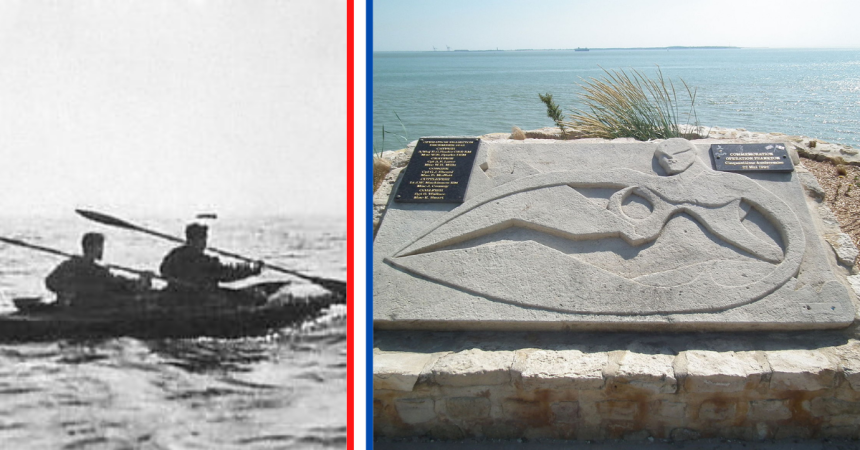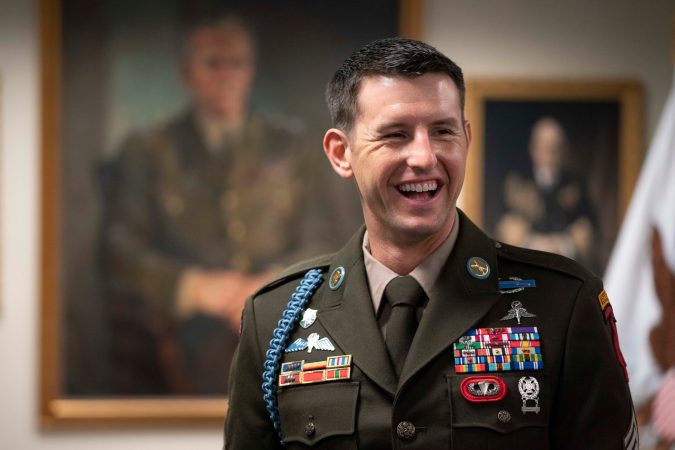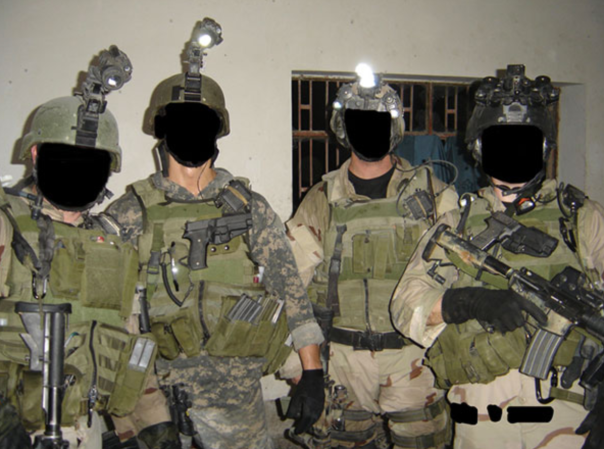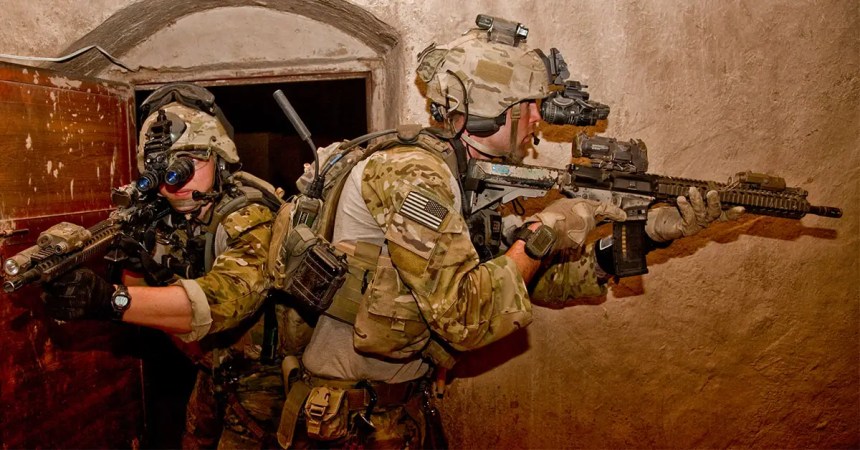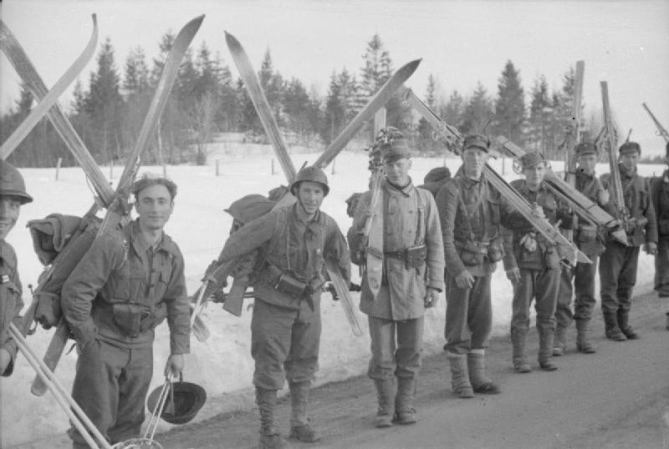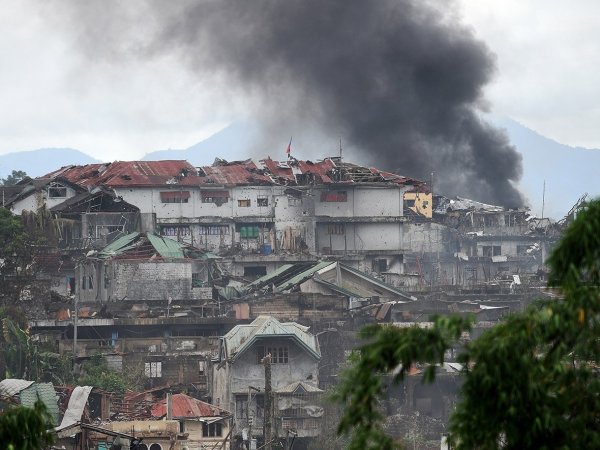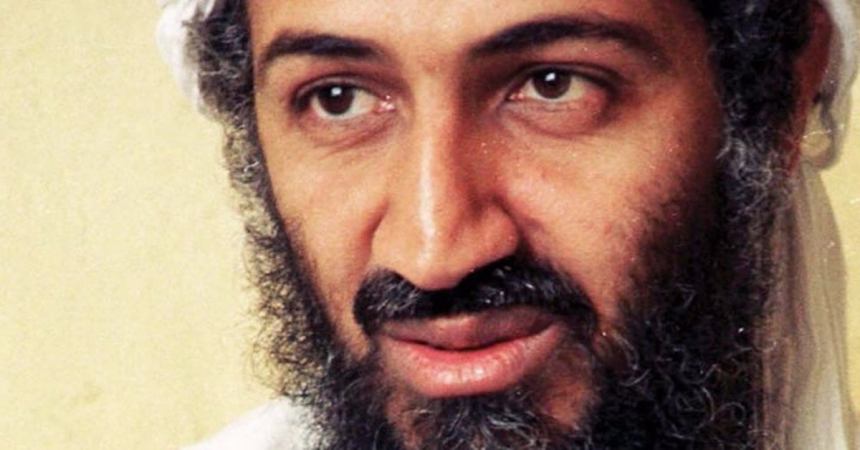1. Trojan Horse

Perhaps one of the earliest examples of a successful commando raid can be found in the 12th century B.C. during the legendary siege of Troy. Though some historians doubt its certainty, both Homer’s Illiad and Virgil’s Aeneid histories point to a daring operation conducted by a select cadre of up to 30 Greek warriors who sealed themselves into the hollow body of an enormous wooden horse statue.
The symbol of the walled city of Troy, the horse was cunningly offered as a gift to the Trojans as the Greek fleet disembarked for home. Seen as a sign of good luck and an offering to the goddess Athena, King Priam of Troy accepted the gift over the objections of several in his court. That night, the Greek commandos emerged from the horse, opening the gates to the rest of the Greek army that clandestinely returned to shore and sacked the city.
Whether its truth or myth, the Greek raid of Troy using subterfuge and disguise still lives on as one of the most cunning and dangerous special operations raids of all time.
2. Assault on Eben-Emael

The first modern military to embrace the concept of special operations, the German army of World War II conducted one of the first commando raids of the 20th Century in the opening days of the invasion of France. Rehearsed in minute detail over a year, the raid by German paratroopers, or Flieger-Jaeger, on the Belgian fortress at Eben Emael is still considered one of the most thoroughly-planned and executed commando operations in history.
A nearly 80-man team of specially-selected paratroopers, including engineers and assaulters commanded by Capt. S.A. Koch, flew aboard nine gliders to the heavily armed fortress built as a part of the famed Maginot Line intended to blunt an anticipated German invasion after World War I. In the early morning hours of May 10, 1940, and despite severe damage to their gliders from anti-aircraft fire and not a few servings of bad luck, the German commandos were able to neutralize the fort’s more than a dozen heavy guns. Though unable to penetrate the fort itself and forced to fight off harassing attacks for more than a day before the Belgians surrendered, the paratroopers rendered Eben Emael’s guns useless within minutes of the assault.
The paratroopers were eventually relieved by German infantry supported by Stuka dive bombers and each of the participants was awarded a medal of valor for the successful — and daring — raid.
3. Entebbe Raid

In one of the most iconic hostage rescues ever — and one that served to epitomize the cunning grit of the fledgling Jewish state — the operation by Israeli commandos to seize a hijacked Air France jetliner in the Ugandan city of Entebbe perhaps epitomizes how special ops could successfully blunt terrorist attacks.
On June 27, 1976, an Air France flight out of Tel Aviv bound for Paris was hijacked by four terrorists, including two West German revolutionaries and two attackers from the Popular Front for the Liberation of Palestine. After a brief stop in Athens and Tripoli the plane eventually landed into the open arms of Idi Amin’s Uganda. The terrorists demanded $5 million and the release of 40 Israeli-held Palestinian militants and threatened to kill the Israeli passengers of the flight.
When negotiations eventually broke down several days later, the Israeli military began planning a raid that would eventually involve nearly 100 men, including 29 assaulters from the legendary Sayeret Matkal — which was modeled off the British Special Air Service — who would fly into Entebbe airport via C-130 Hercules transports and rescue the hostages held in a nearby terminal building.
In the late hours of July 4, the C-130s carrying the assault team commanded by Lt. Col. Yonatan Netanyahu lifted off from the Sinai bound for Entebbe. After landing at the Ugandan airport, the Sayeret Matkal assaulters stormed off the plane in a series of vehicles similar to a motorcade used by Idi Amin. The team eventually secured the hostages, killed the hijackers and held off Ugandan army attacks until they lifted off from Entebbe 90 minutes later.
In all, three hostages were killed, one Israeli commando was killed and five were wounded.
4. Operation Neptune Spear

It may not be surprising to some that probably the most complex and dangerous commando raid in modern times was pulled off by Navy SEALs. A nearly 400 mile round trip into a nuclear armed country who has no idea you’re coming? Check. A terrorist target who’s been running from you for a decade and has a team of fanatical followers rigged to blow you to smithereens if he gets even a whiff of your plan? Check. A super-secret stealth helicopter? Check. A team of spies backing you up? Check. A commando dog? Check.
Sounds like a job for SEAL Team VI.
It’s no longer much of a secret that the operation to kill or capture Osama bin Laden was one of the ballsiest raids ever launched by special ops troops. From the months of practice on full mock-ups of the Abbottabad, Pakistan, bin Laden compound to the clandestine attempts to get DNA samples of the terrorist mastermind, Operation Neptune Spear will surely remain at the top of the list of most daring commando raids for years to come.
On the night of May 1, 2011, a select team of about 24 SEALs from the Naval Special Warfare Development Group flew aboard previously unknown stealth Black Hawk helicopters and assaulted bin Laden’s sprawling compound deep in Pakistani territory. After a crash nearly threw the operation sideways, the SEALs successfully assaulted the compound, killing bin Laden, his son Khalid, his courier Ahmed al-Kuwaiti, al-Kuwaiti’s brother Abrar and his wife. The raid took a total of 38 minutes, with more than half the time devoted to plundering the compound’s trove of intelligence, including computers, hard drives and documents.
The almost unimaginably complex raid was a complete success, with all operators successfully exfiltrating the compound without a single casualty. And if you remember anything from the raid, it’ll probably be the radio call from bin Laden’s room: “For God and country … Geronimo EKIA.”
5. The Raid on Son Tay Prison Camp

Dubbed “Operation Kingpin” and commanded by legendary Army Special Forces Col. Arthur D. “Bull” Simons, the commando raid on the Son Tay prison camp in North Vietnam ranks up with one of the riskiest missions in spec ops history. And while ultimately unsuccessful in its primary mission of rescuing the camp’s American prisoners of war, the mission serves as a prime example of joint special operations planning and support.
Planning for the mission began in early May 1970 after Air Force aerial photos confirmed the camp’s existence, which for years had been suspected of housing more than 60 POWs. Simons selected a team of 130 Special Forces Soldiers from about 500 volunteers to begin training at a secret base in Florida. Over several months, the commandos and Air Force Special Operations air crews flying HH-3E Jolly Green Giants rehearsed the raid on a scale model of the camp.
Finally, in the late hours of November 20, support aircraft including A-1 Skyraiders, F-4 Phantoms and F-105G Wild Weasels and the assault force of six Jolly Green Giant helicopters lifted off for the rescue from bases in Thailand and South Vietnam. At about 2:00am local time, the main assault force of some 50 Green Berets deliberately crash landed its helicopter into the main courtyard of the prison camp guns blazing. After a methodical search of the prison barracks and multiple engagements with guards, the assault force boarded a second helicopter for its exfiltration, empty handed.
Though the mission didn’t recover any of the POWs (intelligence later found they had been moved in July), the raid was a major success, involving a host of joint service assets — including a Navy decoy mission using A-7 Corsairs and A-6 Intruders that tied up North Vietnamese air defense assets as cover for the raid — and resulting in only one injury.
6. Operation Flipper

On the eve of a major offensive in North Africa against the German Afrika Corps, British generals planned a daring operation to assault Gen. Irwin Rommel’s headquarters and kill or capture the legendary Desert Fox.
Dubbed “Operation Flipper,” a team of nearly 60 soldiers from the #11 Scottish Commando and Special Boat Service were to make their way ashore on the coast of Libya and assault inland to Rommel’s headquarters near Apollonia. But the Nov. 10, 1941, mission was a disaster from the start.
Weather eventually forced much of the assault team to abandon the mission, leaving only 25 commandos to attack the objective. The team made it to Rommel’s headquarters but were shortly discovered by German staff and guards. The commando leader was shot and eventually died on the scene. And to make matters worse, Rommel was not at the headquarters.
The operation ended in total failure, with only two of the commandos and one of the SBS operators making it home alive. Nevertheless, Operation Flipper is seen as a bold and complex commando raid that combined covert insertion from a submarine, an arduous trek across miles of desert and a target whose death or capture could have decisively changed the direction of World War II.
7. Operation Oak

It was July 1943 and the Allies were beginning their push north from Sicily and bombing Rome. With the Nazis tied up in the epic battle of Kursk in Ukraine, Italian fascist leader Benito Mussolini was left to his own devices after the Grand Fascist Council passed a no confidence vote on his leadership and he was arrested.
Eventually imprisoned at the Campo Imperatore ski resort high on a mountain in Gran Sasso, Italy, Mussolini was thought to be safe from any escape. But Hitler had other plans.
So on September 12, 1943, elite paratroopers from the German Fallschirmjager and Waffen SS commandos flew DFS 230 gliders to the mountaintop redoubt, landing atop the resort and subduing Mussolini’s 200 captors without firing a shot. The Italian strongman was then whisked away aboard a short takeoff prop plane and eventually took up residence in Vienna, Austria.
Dubbed “Operation Oak” by the German high command, the commando operation was bold and technically difficult given the remoteness and altitude of the Campo Imperatore resort, not to mention the compliment of 200 well-trained Carabinieri guards securing the site — all of whom surrendered to the elite German operators without a fight.
8. Operation Nimrod

In one of the most public commando raids in history, two teams of British Special Air Service operators conducted an early evening assault on the Iranian embassy in London in front of hundreds of television cameras and reporters who broadcast the operation in real time.
Dubbed “Operation Nimrod,” the SAS assaulters repelled from the roof of the embassy and crashed through the ground floor to rescue 26 hostages taken by an extremist Arab independence group. For six days in April and May of 1980, a team of six terrorist besieged the embassy, deadlocking on negotiations with British officials.
On May 5, the SAS was called in after the terrorists killed one of their hostages and the raid was launched in broad daylight. More than 30 assaulters were involved in the raid, which killed all but one of the terrorists. One hostage was killed in the crossfire.
While the entire raid lasted only 17 minutes, the SAS was embroiled in controversy over its tactics, with some questioning whether the commandos used excessive force. One of the terrorists escaped with the hostages but was discovered by an SAS operator later and served a 27-year prison sentence.
9. Moscow Theater Rescue

In one of the boldest terrorist hostage takings in history, Chechen separatists besieged a Moscow theater holding more than 800 people captive for nearly a week.
Up to 40 Chechen terrorists, including female suicide bombers strapped with explosives and detonators, held theatergoers for days, demanding the withdrawal of all Russian forces from the Republic of Chechnya. Negotiations broke down, two hostages were killed and the Russian government spooled up the elite Alpha Group of the Federation’s Spetznaz.
On October 26, 2002, using a specialized gas to knock out both the terrorist captors and their hostages pumped in through the theater’s air ducts, the Alpha troops stormed the theater guns blazing. No quarter was given to the terrorists, some of whom lay unconscious with bombs still strapped to them and thumbs on their detonators. The Spetznaz commandos shot nearly 40 Chechen terrorists and captured several more.
While most of the hostages were rescued, more than 130 eventually died from poor care after the assault, the gas causing many to suffocate. Some of the Alpha troops also suffered injuries due to exposure to the gas. The raid was aggressive, cunning and was the first known major commando assault to use a still unknown gas to suppress the target before the assault.
10. Benjamin Tallmadge

While not a specific raid per se, the combined operations of Maj. Benjamin Tallmadge and his troop of 2nd Continental Light Dragoons caused mischief and mayhem among British troops during the American Revolution, raiding Redcoat convoys, burning supplies and even running an espionage ring in the Northeast.
In one famous operation, Tallmadge and his Dragoons rowed across Long Island sound, hiked 20 miles inland and assaulted the British fort at Manor St. George in New York. The colonial commandos killed two British troops and quickly subdued the fort in the dead of night in November 1780. Tallmadge and his Dragoons are also famous for holding off attempts by British commandos to assault Gen. George Washington and his staff, serving as Washington’s personal body guard.
Tallmadge also played a pivotal role in unmasking the treachery of Benedict Arnold and his spy ring.
The role of Tallmadge’s 2nd Continental Light Dragoons is noteworthy because at the time such special operations and covert assaults were frowned upon by many traditional military officers, and it is seen as a testament to Washington’s strategic thinking that he allowed Tallmadge and his patriot commandos to operate as they did.
 Christian Lowe is the former managing editor of Military.com. He’s currently the online content director at the Grand View Media Group.
Christian Lowe is the former managing editor of Military.com. He’s currently the online content director at the Grand View Media Group.


